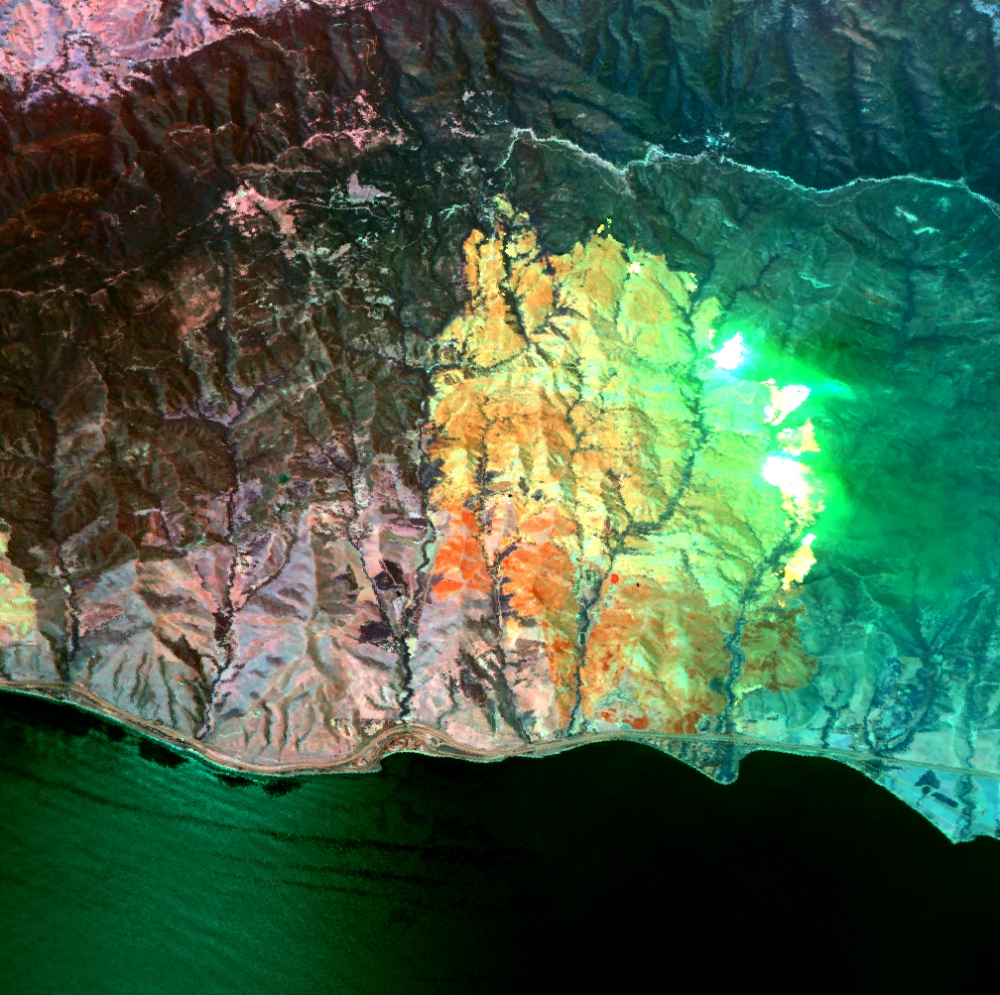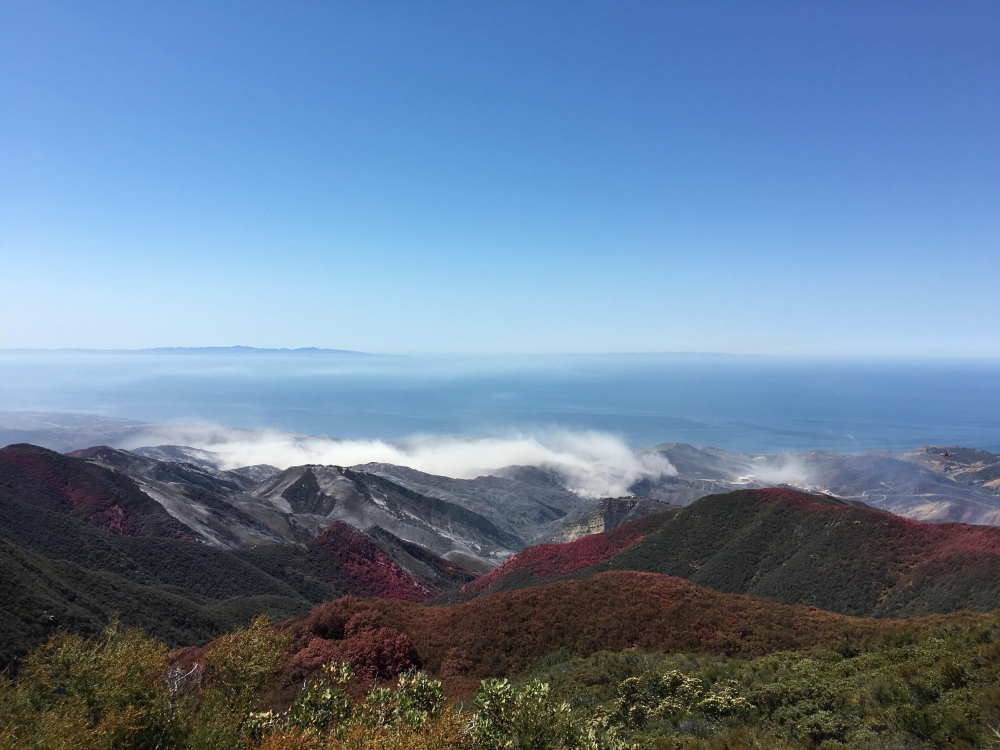Smokin’ Hot
The Sherpa fire, which broke out June 15 in mountainous terrain at the top of Refugio Road in Goleta, has charred nearly 7,500 acres. But the blaze, expected to reach full containment by midnight tonight, may turn out to have a silver lining — at least from a scientific standpoint.
In a stroke of luck, NASA imaged the area on the third day of the fire and took atmospheric measurements with DC-8 and ER-2 aircraft following the same flight path — north from the Santa Barbara coast to Figueroa Mountain then south again— as a 2011 data-gathering mission.
UC Santa Barbara geographer Dar Roberts will use the data for scientific inquiry. He also will share the information with students in NASA’s Student Airborne Research Program (SARP), for which he serves as the faculty advisor of the land group.
In existence since 2009, SARP is an eight-week summer program gives advanced students from around the country hands-on research experience. Some of this year’s participants flew onboard the DC-8 as it gathered a suite of air samples. They assisted in the operation of instruments that sampled and measured solar radiation, atmospheric trace gases and aerosols.
“The Sherpa fire provides an opportunity for some students to study fire and fuel properties,” said Roberts, a professor in the Department of Geography. “We have all this data from before the fire for comparison. Plus, we’re in the worst drought in 120 years, so this unique combination of events presents a lot of interesting research possibilities.”
According to Carla D’Antonio, who studies the effects of chaparral fire on the ecosystem, the Sherpa event would have been much worse had sundowner winds persisted. “We get a lot of sundowners this time of year,” said D’Antonio, the environmental studies chair and a professor in the Department of Ecology, Evolution, and Marine Biology.
“If you think about our destructive fires, many of the major ones were driven by sundowners,” she continued. “The Jesusita fire in May 2009, the Gap fire in early July 2008 and the Painted Cave fire in June 1990 were all wind driven.”
“Sundowner” is the local name for gusty downslope winds accompanied by rapid warming and decreased relative humidity that affect coastal areas in Santa Barbara. They tend to pickup from late afternoon — usually after sunset — and last until early morning, which explains the name.
“Sundowners typically occur when we observe very high pressure in Santa Maria and/or Bakersfield compared to coastal areas combined with northerly winds across the Santa Ynez Mountains,” explained geography professor Leila Carvalho, who studies the phenomenon. “The warming and drying occur because of the compression of the air from the top of the mountains to sea level, which increases temperature and decreases relative humidity.”
At the beginning of the Sherpa fire sundowners caused the burn area to double on two consecutive nights. “This fire concerns people because it’s a sort of harbinger of what might be a pretty bad fire season in Santa Barbara,” Roberts said. “We only got about 70 percent of our rain, so it’s pretty dry.”
What’s interesting, he added, is that despite the lack of precipitation, the shrubs are “not so dry.”
Recent fuel moisture sampling fire ecologist Max Moritz, an associate at the National Center for Ecological Analysis and Synthesis, measured moisture levels in the Santa Ynez foothills. The average was around 80 percent, which he noted was neither high nor at the worrisome 50 or 60 percent level.
“The Sherpa fire is the first we’ve had on top of this severe drought so the plants are in pretty bad condition going into the fire,” D’Antonio said. “There’s a lot of dead material in the canopy — more than I have ever seen here.
“Warmer temperatures and the extreme nature of this drought mean the vegetation is going to burn at pretty high intensity,” she added. “If the drought continues, we might even see a change in the composition of the chaparral.”
With an outlook that predicts continued drought, only time will tell whether the chaparral burned in the Sherpa fire regrows the same plant species. “We know the fuel moisture is going to get lower — and it’s going to be a long fire season,” Roberts said.






